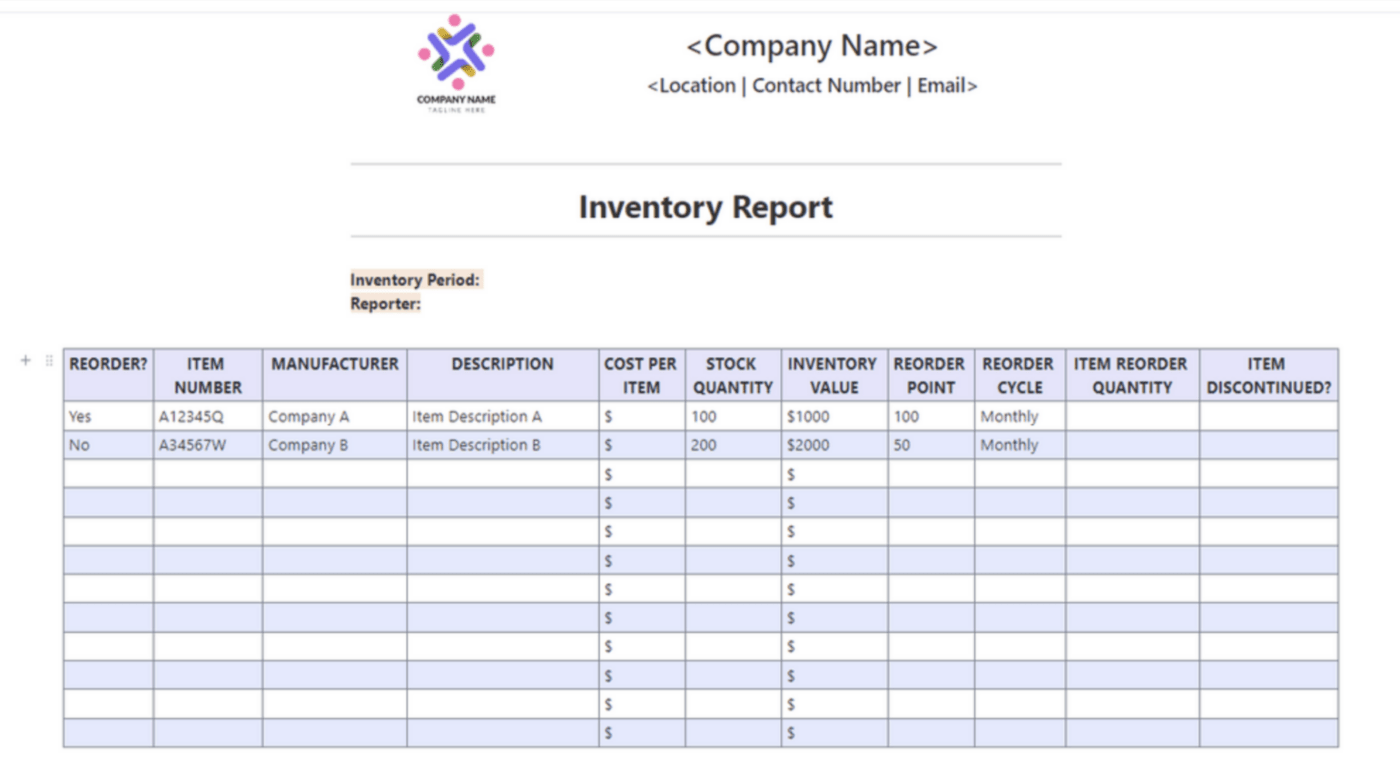Introducing the business inventory log template, an indispensable tool that empowers businesses to streamline their inventory management processes. This comprehensive guide delves into the significance, elements, customization, implementation, and best practices associated with inventory log templates, equipping you with the knowledge to optimize your inventory tracking and drive business success.
With a business inventory log template, you gain the ability to maintain accurate and organized inventory records, minimizing discrepancies, preventing stockouts, and maximizing profitability. Its versatility extends to various industries, from retail and manufacturing to healthcare and hospitality, making it a valuable asset for businesses of all sizes.
Business Inventory Log Template Overview

A business inventory log template is a pre-designed form that provides a structured way to track and manage inventory levels. It typically includes fields for recording essential information such as product name, description, quantity on hand, and reorder point.
Using a template for inventory management offers several benefits. It:
- Ensures consistency in recording inventory data
- Facilitates accurate and up-to-date inventory tracking
- Simplifies the process of managing inventory levels
- Provides a centralized location for inventory information
- Supports informed decision-making regarding inventory management
Best Practices for Using a Business Inventory Log Template

To effectively use a business inventory log template, follow these best practices:
Maintaining accuracy, organization, and efficiency in inventory tracking is crucial for businesses. Utilizing a business inventory log template can streamline this process, but it’s essential to adhere to certain best practices to ensure its effectiveness.
Maintaining Accuracy, Business inventory log template
- Record all inventory transactions promptly and accurately.
- Verify the accuracy of inventory counts regularly through physical inspections or cycle counting.
- Use barcodes or RFID tags to minimize errors in data entry.
Ensuring Organization
- Categorize inventory items logically and consistently.
- Use a separate log for each inventory location or warehouse.
- Keep the log organized and up-to-date.
Promoting Efficiency
- Automate inventory tracking processes using software or technology.
- Train staff on the proper use of the inventory log template.
- Establish clear inventory management policies and procedures.
Ending Remarks

In conclusion, the business inventory log template serves as a cornerstone for efficient inventory management. By implementing and utilizing it effectively, businesses can gain a competitive edge, enhance customer satisfaction, and pave the way for sustained growth. Embrace the power of inventory log templates and unlock the potential for seamless inventory tracking, improved decision-making, and ultimately, business prosperity.
